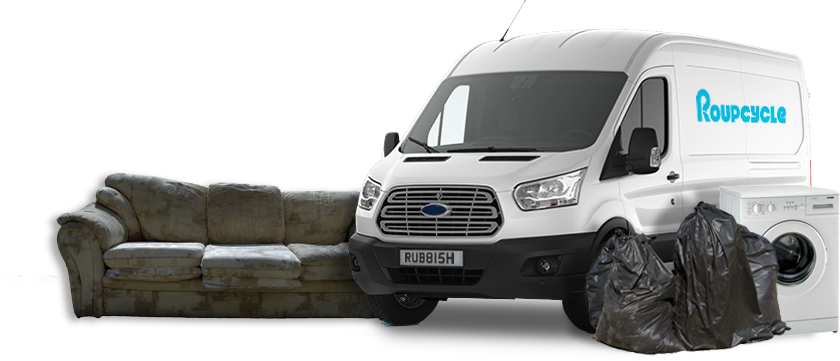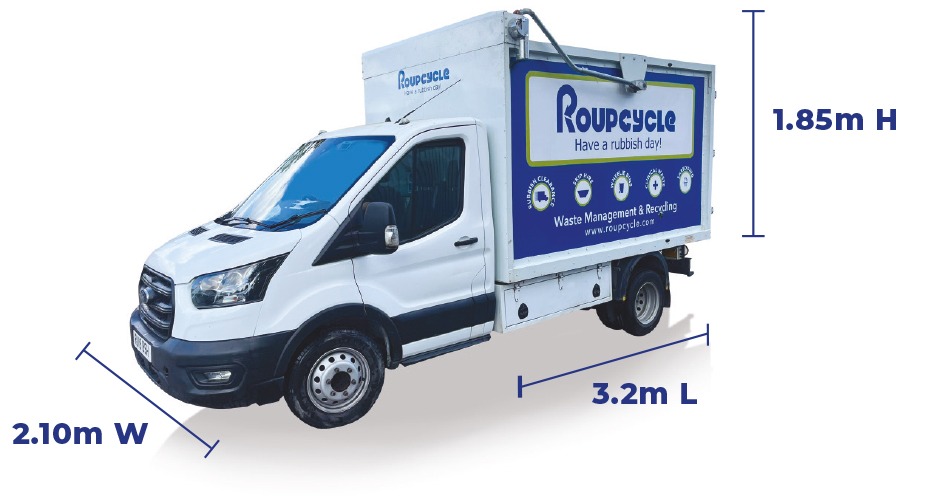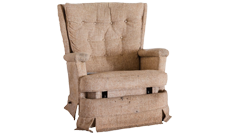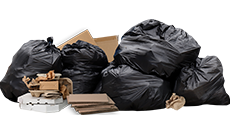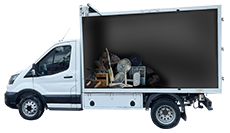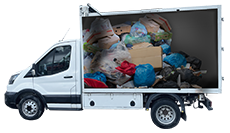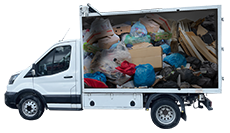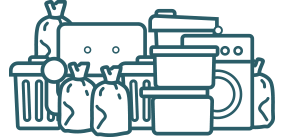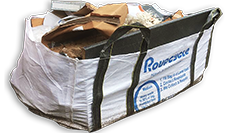Prices depend on the volume (and/or weight) of waste collected. We have priced waste collections in cubic yards the same as skip hire. One cubic yard is the size of a bulk bag (you may have seen building materials delivered in these bags). 4 cubic yards is equal to a small skip, 6/7 cubic yards is the same as the typical skip you see on most driveways.
Rubbish removal costs include an allocated labour time on site and disposal costs.
Additional costs for mattresses, tyres, fridges, and some other items will be a direct cost from the waste transfer station to cover higher recycling rates. Roupcycle pays a rate for disposal by weight, therefore there may be additional charges for heavy waste.
If you are unsure, please send us a photo and a description of what you have to go.




